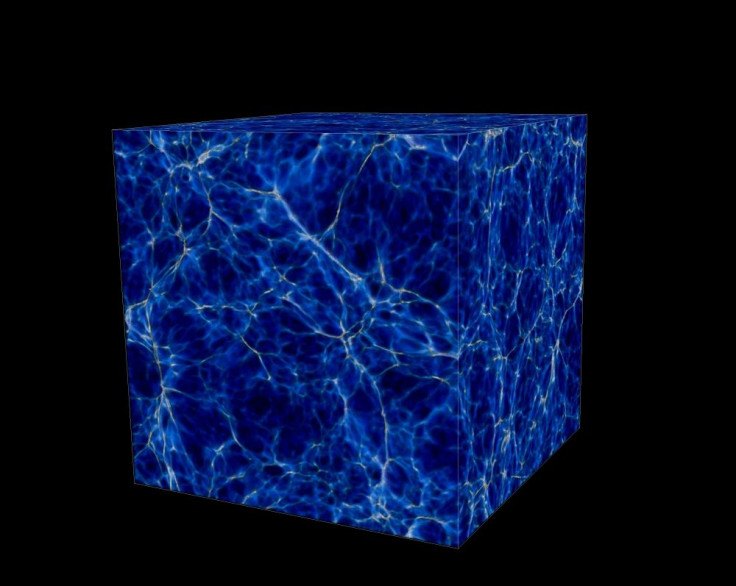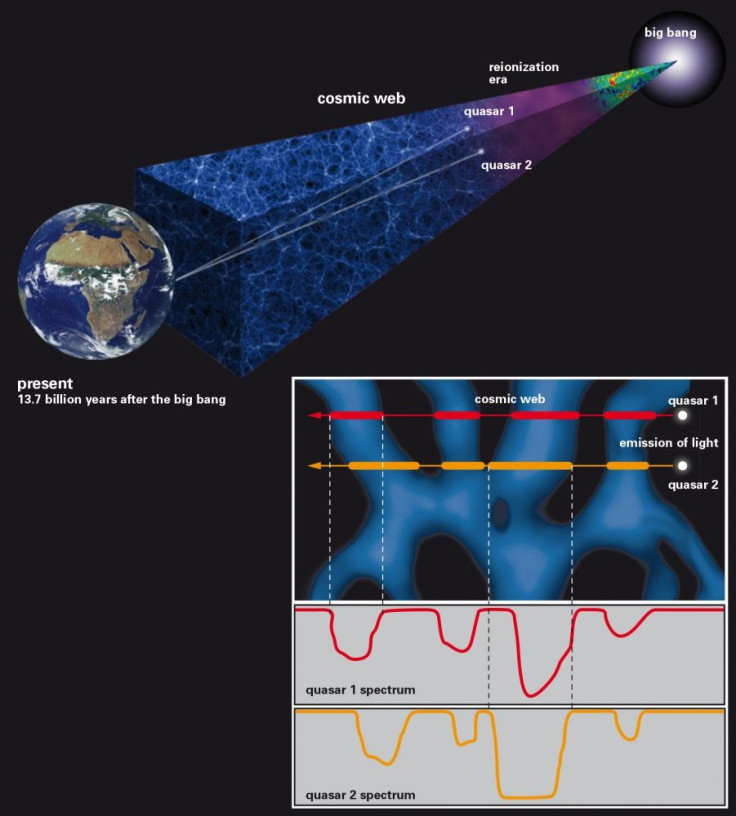Astronomers Study Ripples In The Cosmic Web Using A Pair Of Distant Quasars

The space between galaxies is a cold and dark place filled only with a filamentous haze of hydrogen atoms left over from the Big Bang. These filaments, spanning across millions of light-years — much larger than the largest galaxies — constitute the cosmic web, and account for most of the ordinary matter (as opposed to dark matter) in the universe.
A team of astronomers has now made the first measurements of small-scale ripples in the hydrogen gas that makes up these intergalactic connections. Since these filaments do not emit any light of their own, the astronomers studied their structure and composition by analyzing light from distant quasars as it passed through the cosmic web.
Read: Fast Radio Burst Helps Map The Cosmic Web
Quasars are bright cores of distant active galaxies. As light from background quasars passes through the gas and dust in foreground galaxies and cosmic filaments, it carries information about speed, composition and temperature of the intervening space.
In this case, the researchers were able to probe the cosmic web on a much smaller scale than before due to discovery of a pair of quasars that were, when seen from Earth, located close to each other. This “cosmic coincidence” allowed them to measure subtle differences in the absorption of intergalactic atoms along the two sightlines.

“Pairs of quasars are like needles in a haystack,” Joseph Hennawi from the University of California, Santa Barbara, who was part of the team that made the observations, said in a statement. “In order to find them, we combed through images of billions of celestial objects millions of times fainter than what the naked eye can see.”
Once the researchers found these cosmic oddities, they compared the observed spectra with supercomputer simulations of the formation of cosmic web and its evolution over the past 13.8 billion years.
“The input to our simulations are the laws of physics and the output is an artificial universe, which can be directly compared to astronomical data,” Jose Oñorbe, a postdoctoral researcher at the Max Planck Institute for Astronomy in Germany, said. “I was delighted to see that these new measurements agree with the well-established paradigm for how cosmic structures form.”
Scientists believe that these observations could provide crucial insights into the scarcely understood reionization phase of the universe, and help understand the events that led to the birth of the first galaxies about 100 million years after the Big Bang.
In the beginning, the cosmos was a hot soup of ionized gas — with electrons and ions of hydrogen and helium buzzing around. Then, roughly 400,000 years after the Big Bang, the universe entered an era of “recombination,” where it cooled down enough to allow ions to recombine into atoms. Later, when the first generation of stars were born, they emitted strong radiation that ionized hydrogen once again, and led to the synthesis of other heavier elements such as carbon and oxygen.
“One reason why these small-scale fluctuations are so interesting is that they encode information about the temperature of gas in the cosmic web just a few billion years after the Big Bang,” Hennawi said in the statement.
© Copyright IBTimes 2024. All rights reserved.






















